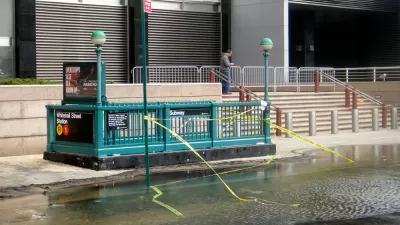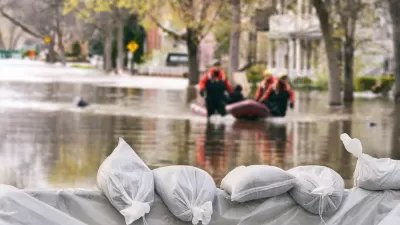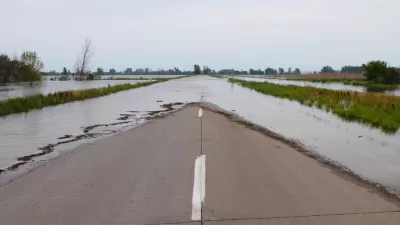As climate-driven flooding and storms put increasing pressure on coastal communities, some say the piecemeal nature of federal recovery and mitigation efforts aren’t cutting it.

Coastal communities are increasingly threatened by sea level rise and severe weather events. As a growing number of residents face the decision to stay or go, experts are calling for a more comprehensive, coordinated response to recovery, resilience, and buyouts.
“[M]any hundreds of communities in the US could soon be facing the same heart-wrenching choice. Even under optimistic scenarios, scientists predict that by 2100 some 4.2 million Americans across 500 coastal communities will experience ‘disruptive inundation,’” Timothy Shuler reports a reporter for Next City. That’s the case for residents in Oyster, Virginia, where sea level has risen by a foot and a half.
The financial strain of flood damage—expected to jump by 30 percent by 2050 from $9.4 billion today to $12.8 billion for federally backed mortgages, according to the Congressional Budget office—combined with patchy federal preparedness and response programs that often disproportionately disadvantage low-income and BIPOC communities, have led some experts to ask if a entirely new federal entity is necessary. Some are proposing “a department that could plan and coordinate the challenging process of relocation and adaptation known as managed retreat.”
Creating a single agency would avoid the siloed and conflicting responses after major disasters, such as after Hurricane Matthew in 2016, when the Federal Emergency Management Agency began funding floodplain buyouts in Princeville, North Carolina at the same time the US Army Corps of Engineers was spending hundreds of thousands of dollars on a plan to better protect the town and the state was pushing community-wide relocation.
“There’s no thread that connects the investment [of a buyout] to something that is actually meaningful. There’s nothing that follows the dot all the way through,” Kate Orff, faculty director of Columbia University’s Center for Resilient Cities and Landscapes told CityLab. She said what’s needed “is a program that actually looks more synthetically at how all of these things come together.”
FULL STORY: Who Will Manage the US Climate Retreat?

Alabama: Trump Terminates Settlements for Black Communities Harmed By Raw Sewage
Trump deemed the landmark civil rights agreement “illegal DEI and environmental justice policy.”

Planetizen Federal Action Tracker
A weekly monitor of how Trump’s orders and actions are impacting planners and planning in America.

Why Should We Subsidize Public Transportation?
Many public transit agencies face financial stress due to rising costs, declining fare revenue, and declining subsidies. Transit advocates must provide a strong business case for increasing public transit funding.

Understanding Road Diets
An explainer from Momentum highlights the advantages of reducing vehicle lanes in favor of more bike, transit, and pedestrian infrastructure.

New California Law Regulates Warehouse Pollution
A new law tightens building and emissions regulations for large distribution warehouses to mitigate air pollution and traffic in surrounding communities.

Phoenix Announces Opening Date for Light Rail Extension
The South Central extension will connect South Phoenix to downtown and other major hubs starting on June 7.
Urban Design for Planners 1: Software Tools
This six-course series explores essential urban design concepts using open source software and equips planners with the tools they need to participate fully in the urban design process.
Planning for Universal Design
Learn the tools for implementing Universal Design in planning regulations.
Caltrans
Smith Gee Studio
Institute for Housing and Urban Development Studies (IHS)
City of Grandview
Harvard GSD Executive Education
Toledo-Lucas County Plan Commissions
Salt Lake City
NYU Wagner Graduate School of Public Service





























